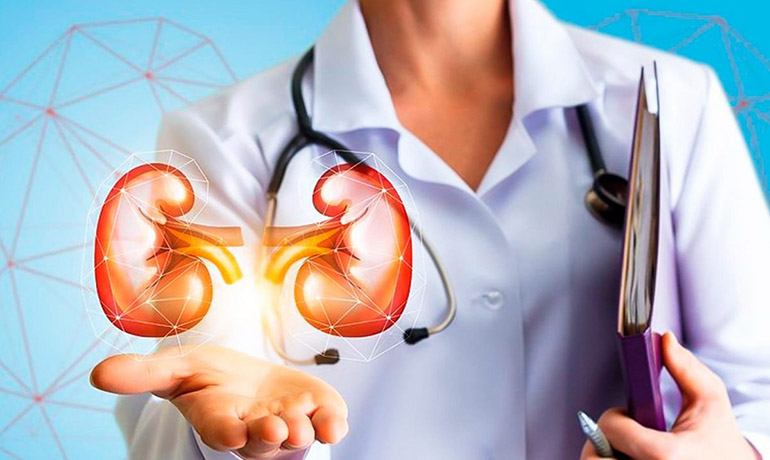Kidney stones are very common. According to some estimates, almost ten out of every hundred people have a kidney stone at any given time. Kidney stones are hard deposits made of minerals and salts. They start as small deposits of crystals that attract more crystals, finally taking the form of stone.
Types of Kidney Stones
There are four major types of kidney stones— calcium, struvite, uric acid, and cystine. More than ninety percent of people have calcium stones.
Learning about the nature of your kidney stone is essential for its prevention and management.
Kidney Stones Formation
The kidney is the main organ for washing out our body’s waste products. Each day, these two tiny beans together filter about 200 liters of blood, of which about 1 to 2 liter is made into the urine.
When blood is filtered through the kidney, it leaves its waste products in the kidney, products like toxins and salts. These salts, when accumulated in a concentrated form, transform into crystals. Over time, these crystals bulk together to form stones.
Most patients develop only one form of stones, for they are at risk of developing only those particular stones. However, one person can be found to have more than one kind of kidney stone.
Kidney Stone Foods
If you think that not everything you eat affects your kidney, you need to change your mindset. Every food or drink or drug that goes into the body passes through the kidney via blood. Some of these edibles significantly enhance the process of stone formation. For patients with kidney stones, it is imperative that they learn about these foods and avoid them as much as possible.
Excessive Caffeine
Common in coffee, tea, and carbonated drinks, this stimulant somehow increases the calcium level in the kidney, promoting calcium stone formation.
Meat
Meat is a protein, and its digestion results in the production of uric acid, which helps promote uric acid stone formation. Meat also makes urine more acidic, another factor that favors stone formation.
Salt
Excessive salt in food mandates its excretion through the kidney. During this excretion, the sodium drags along calcium in the urine, working as a fuel to the process of calcium stone formation.
Carbonated Drinks
Black-colored beverages are replete with phosphorus, which, if you remember from the first post, is the second most common salt that forms stones. Sugary drinks, too, should be avoided.
Artificial Sweeteners
These are a recent innovation and a very helpful one at that. While good for diabetics, it may harm others because we don’t know the complete side effect profile of these chemicals. And it is terrible for stone formers. So, while the jury is still out, you better opt for natural sweeteners, like honey or sugar.
Oxalate
Calcium oxalate are the most common stone. To avoid these stones, we must cut the foods packed with oxalate. Here is a list: spinach, rhubarb, almonds and cashews, miso soup, grits, baked potatoes with skin, beets, cocoa powder, okra, bran cereals, shredded wheat cereals, French fries, raspberries, Stevia sweeteners, and sweet potatoes.
Dairy
Last is the most confusing. We have heard all our life that milk is good. But not for those whose kidneys are just calcium stone-forming machines. These patients must be careful about how much dairy product they consume daily.
Kidney Stones and Water Intake
How much water should a kidney stone patient drink daily?
Guidelines regarding this issue are mixed. Some suggest increasing the water intake; others recommend aiming for specific urine output.
The first group emphasizes that a person with kidney stones should drink at least 2 liters of water daily. The more, the better. But they are not to exceed 5 liters. These instructions are easy to follow. One has just to carry a labeled water bottle all day long and keep track of his water intake.
The latter group stresses that urine output varies with the weather due to sweating in summer. Therefore, to ensure your urine is dilute enough to resist stone formation, one should rely more on the quantity of urine output rather than water intake. These pedants suggest achieving 2.5 liters of urine per day to keep the sludge from accumulating in the kidney.
As perfect medicine is the one that can be taken regularly, similarly the perfect instructions are the ones that can be followed easily. As a whole, any water intake above 2 liters per day has shown a significant reduction in stone formation in a number of studies. So, please keep it simple and drink 3 to 4 liters of water every day.
Caution: Those with heart failure and sodium issues should talk to their physicians before using so much water.
Kidney Stones Management
let’s close our discussion about their management.
Diagnosis of your kidney stone type is very important, for this information is essential to the management.
Not everyone with kidney stones has symptoms. It is only when stones impede urine flow, producing a backup pressure in the kidneys, that they cause pain.
So, stones that are asymptomatic are better left alone, though one should do his best to adopt preventive strategies, and measures to stop or slow down the process of stone formation.
For symptomatic patients, stones smaller than 5mm and causing obstruction to have a pretty good chance of being expelled on their own or with a little push (usually with aggressive fluid intake and medicine). Stones greater than 10mm in size are less likely to come out on their own or even with medical therapy. These large stones need some kind of instrumental intervention.
To do: Ask your doctor about the type of your stones. Address the symptomatic stones with appropriate therapy. And, lastly, adopt preventive strategies to keep your kidneys clear of stones.


